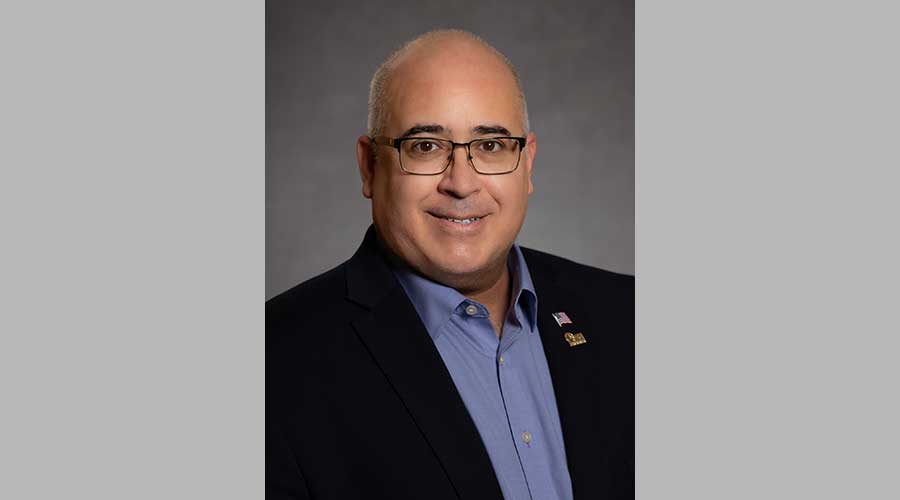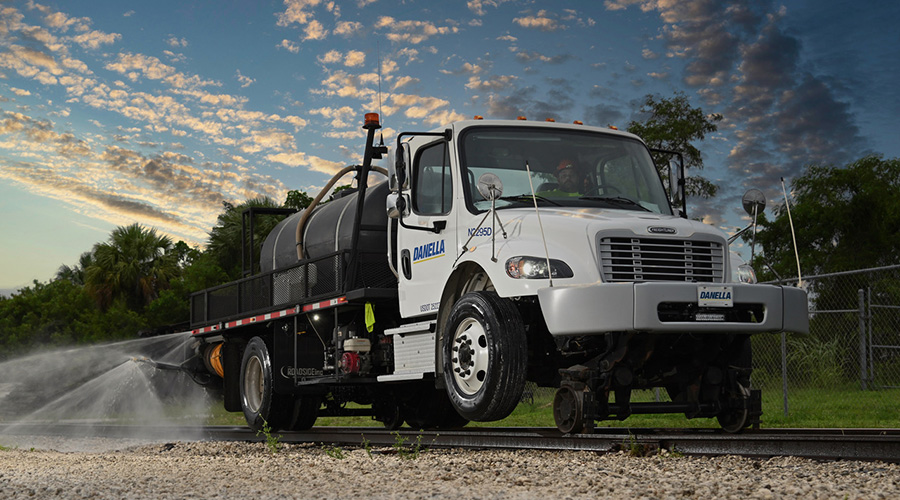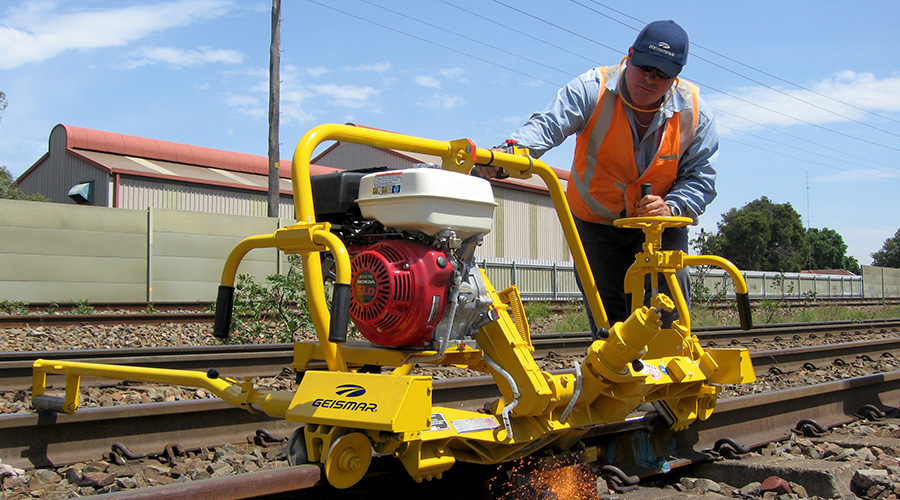Stay updated on news, articles and information for the rail industry
September 2013
Rail News: MOW
Ferromex increases infrastructure investment to prepare for growth
— by Pat Foran, Editor
Last year was a pretty good one for Ferrocarril Mexicano S.A. de C.V. (Ferromex). The Class I recorded revenue of $1.35 billion. The railroad — which serves the Mexico City-Guadalajara-Monterrey economic triangle, four ports on the Pacific Ocean and two on the Gulf of Mexico — also originated 506,797 carloads, or 1.2 percent more than 2011's total, according to Association of American Railroads (AAR) data. Volume gains in chemicals, autos, food and kindred products, and farm products helped offset declines in grain, coal and metals traffic.
The 4,407-mile railroad also got a big boost from intermodal last year, carrying 212,460 units, or 17.7 percent more than 2011's tally, according to the AAR.
This year will be even better, Ferromex officials say, in part due to Mexico's burgeoning auto sector; solid minerals and fuel-oil traffic; a recovery in the grain market; and opportunities the country's intermodal evolution continues to afford. The railroad's 2013 revenue goal is $1.52 billion, or 12.6 percent more than 2012's total. For Ferromex affiliate Ferrosur S.A. de C.V., the goal is $343 million, or 9.6 percent more than last year's sum. Ferromex parent Grupo México S.A.B. de C.V. owns Ferrosur; both roads are part of Grupo México's transportation division.
Through 2013's first half, the 917-mile Ferrosur was on track to blow past its goal, recording revenue of $182.6 million, a 15.9 percent increase. Ferromex was off to a decent, albeit slower than anticipated, start. With carload traffic up about 4 percent and intermodal tracking about 2.5 percent higher, the railroad posted revenue of $721.3 million, a 6.3 percent increase.
"Although we think that we are going to be meeting [our goal], it's going to be a little difficult — the economy has not been growing as we expected," says Ferromex Chief Executive Officer Rogelio Vélez. "But we still see a lot of opportunity."
And not just this year. Ferromex execs say the railroad will be in growth mode for the foreseeable future, and they're investing accordingly in 2013.
"We expect growth, and we have to invest in the railroad to make sure we can handle it," Vélez says.
Ferromex: $450 million for capex
For 2013, Ferromex budgeted $450 million for capital expenditures — or 30 percent of the railroad's total income, Vélez says.
"That's the highest of any other Class I in North America," he adds. "U.S. railroads are around 17 percent; Canada's, too."
About 80 percent of that $450 million is dedicated to infrastructure investment. Some of the work — which ranges from completing double-track projects to re-laying rail to building new sidings — will help the railroad move more automotive traffic.
"We're expecting double-digit growth for the next three years in automotive," Vélez says.
Year one is unfolding according to plan. A boost in production at a Ford plant in Hermosillo, along with increased exports to the United States from a Guadalajara Honda plant and Aguascalientes Nissan facility, helped drive a 13 percent increase in Ferromex auto traffic during the first half compared with the same 2012 period, Grupo México officials reported during the company's second-quarter earnings meeting on July 23.
There's more traffic coming. Three new auto plants — one for Mazda in Salamanca, Nissan in Aguascalientes and Honda in Celaya — will come online in the fourth quarter or first-quarter 2014, Vélez says. An Audi plant also is scheduled to open in San José Chiapa in 2015 or 2016. Ferromex will be able to serve all four facilities. To make sure it can, the railroad this year leased 500 tri-level rail cars.
Auto isn't the only segment generating business this year. Ferromex and Ferrosur also are moving more fuel oil. In December 2009, Ferrosur entered into a three-year pact with Mexico-owned petroleum producer Pemex to haul diesel fuel from a refinery near Mexico City to Coatzacoalcos. The contract was renewed in January.
"It represents 10,000 to 12,000 carloads a year," Vélez says.
And since late 2010, Ferromex also has been transporting fuel oil, delivering 1,200 carloads per month, prompting the railroad to lease an additional 100 tank cars this year.
"It's been good business for us," Vélez says.
So is minerals traffic, particularly mineral ore in the north-to-south Nogales-Guaymas corridor.
"We're doing very well with our partners in Grupo México, as well as Southern Minerals Group L.L.C.," Vélez says. "We are also doing well with new traffic."
And then there's grain, which remains the railroad's highest revenue generator. Last year, volumes were down 8 percent compared with 2011 totals. The culprit: severe droughts in the United States and the northwest Mexican state of Sinaloa — the after-effects of which lingered into first-half 2013, Vélez says. But the grain outlook is getting brighter.
"Seven months into 2013, we are still down 2 percent versus 2012, [but] we now know that crops in the U.S. are expected to be quite high for the end of the year," Vélez says. "And we expect to end the year 5 percent better than 2012."
Ferrosur And Fusión
Ferromex officials also anticipate intermodal volume growth this year, which so far, as Vélez characterizes it, has been "steady." Through 2013's first seven months, Ferromex handled 130,500 intermodal containers, a 2.5 percent increase compared with the same 2012 period, according to Ferromex data. Due to rate mixes and the exchange rate, Ferromex recorded intermodal revenue of $55.7 million, up 13 percent.
Vélez expects better numbers in the second half, saying that Ferromex officials remain excited about the future of intermodal, but he declined to elaborate.
Actually, they're excited about the future, period. Ferromex officials are proud of the progress they believe the railroad has made since its 1998 privatization. But the railroad is ready to take next-level steps, they say. One of them could be completing the long-awaited merger with Ferrosur.
In 2005, Ferromex announced plans to acquire Ferrosur, a deal Mexico's Comisión Federal de Competencia rejected on grounds the transaction was anti-competitive. A six-year court battle ensued. In 2011, the Mexican government blessed the deal. Now, it's up to Grupo México to decide when to formally fuse the two roads, which at minimum would result in operating efficiencies.
"Negotiations are continuing," says Ferromex Chief Financial Officer Isaac Franklin, who joined the railroad in August 2012 after a three-year stint as director general of Ferrocarril y Terminal del Valle de México S.A. de C.V. "We don't have a green light yet, or a specific time for the merger to be completed."
In the meantime, Ferromex will continue to step it up on the investment front.
"Our five-year plan calls for aggressive growth — growth that is over the country's growth," says Vélez, who's been with Ferromex since 2000 and CEO since 2008. "We will be spending heavily in the next five years. We need to make sure that we have enough capacity."
Investments in technology continue to be made, as well. For the past three years, the railroad's information technology team has been working with IT counterparts at Union Pacific Railroad to replace SICOTRA, the Ferromex transportation management system. (UP owns 26 percent of Ferromex; Grupo México owns the rest.) SICOTRA will be replaced with NetControl, which UP is developing to replace its own 40-year-old IBM mainframe-based transportation system. System implementation, which will cost $34 million, should be completed in two years, says Ferromex Chief Operations Officer Lorenzo Reyes Retana.
Ferromex managers also need to prepare the railroad's workforce to meet growth-related challenges. Reyes Retana touts the development of Instituto de Capacitación Ferroviaria, a training institute for rail operating personnel, as a case in point.
"Together with hiring [the right] people, we need to make sure all the operating activities are being done by people who are very well trained — not just in the technology, but also in attitude," says Reyes Retana, who's served Ferromex and its government-owned predecessor since the late 1980s. "We have a lot of hope and expectation of what the center can bring to Ferromex, in terms of improvement."
Rail Cargo Security Quandary
At Ferromex, continuous improvement has always been part of the plan. Staying that course has been no mean feat, given the challenges of everyday rail life in Mexico. One of the bigger challenges is contending with cargo theft, which continues to proliferate.
"We are spending around $32.5 million pesos a month on security," Reyes Retana says. "That is up from practically zero six years ago."
Most of the security spending covers the cost of federal police protection.
"One problem is they have not been able to develop agents as fast as we need them," Vélez says.
Officials from Ferromex and other Mexican railroads continue to try to convince Mexico's Ministry of Communications and Transport to look more closely at cargo security, Reyes Retana says. Potential solutions include establishing a dedicated rail police unit and making a crime against a railroad a federal crime.
"In society today, this is a big, big challenge, and it's something we can't resolve on our own," Vélez says. "They have to punish the guys that do wrong. If the government does not do what it has to do, it's going to be very difficult."
Not that Ferromex officials ever expected it to be easy. Overcoming challenges has been the hallmark of post-privatization rail life. Being in growth mode certainly helps. So does a strong balance sheet.
"Our finances are very healthy — we have almost no debt," CFO Franklin says. "We are a growing company, and we are in a position to keep growing."
They certainly like the view from that vantage point.
"We just need to stay ahead of the economic growth that we know is coming," Vélez says.
Keywords
Browse articles on Ferromex infrastructure investment Grupo Mexico Ferrosur capex Union Pacific rail cargo securityContact Progressive Railroading editorial staff.


 2025 MOW Spending Report: Passenger-rail programs
2025 MOW Spending Report: Passenger-rail programs
 Gardner steps down as Amtrak CEO
Gardner steps down as Amtrak CEO
 Guest comment: Oliver Wyman’s David Hunt
Guest comment: Oliver Wyman’s David Hunt
 Women of Influence in Rail eBook
Women of Influence in Rail eBook
 railPrime
railPrime






